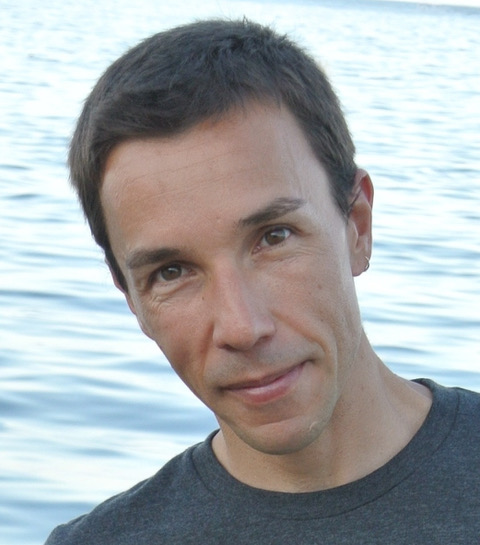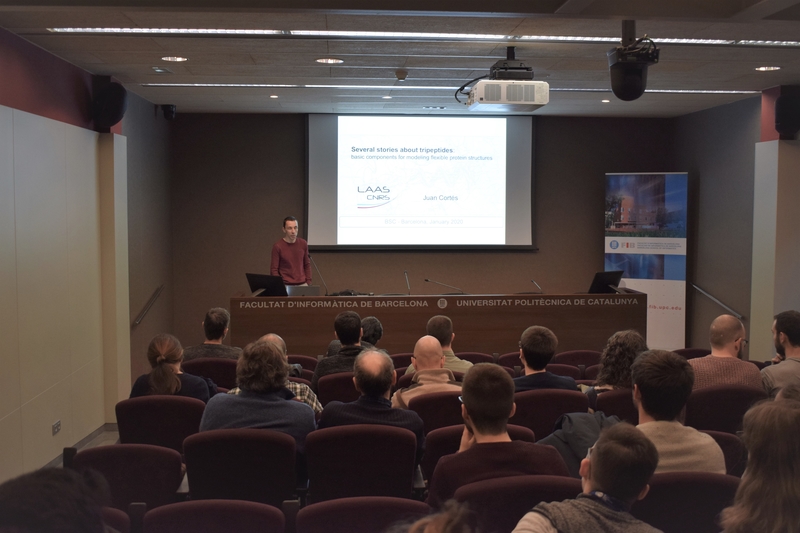Objectives
Download the presentation here
Abstract: From a mechanical point of view, fragments of three consecutive amino acid residues (called tripeptides hereafter) are very interesting elements of polypeptide chains. Indeed, if we consider the bond torsion angles as the main degrees of freedom, the 6 angles in a tripeptide (3 pairs of phi-psi angles, neglecting the variation of omega angles) are the minimal number allowing full relative mobility of the two ends of the chain. Besides, using techniques originating from robotics, the angle values corresponding to a given pose of the two ends the can be obtained very efficiently. This property has been exploited over decades within conformational sampling methods applied to cyclic peptides or protein loops. It can also be used to enhance conformational sampling of globular proteins using Monte Carlo methods, or to conceive sophisticated algorithms for modeling large-amplitude conformational transitions. In the first part of my presentation, I will briefly talk about all these applications.
Tripeptides are also interesting elements from a structural point of view. They are minimalistic fragments capturing local, sequence-dependent structural preferences of proteins. To encode and to analyze these structural properties, we have constructed an exhaustive database to tripeptide conformations extracted from experimentally-determined high-resolution protein structures. In the second part of the talk, I will show how this database can be used to construct realistic models of intrinsically disordered proteins (IDPs) and to predict the propensity of some regions to form secondary structure elements.
 Short bio: Juan Cortés received the engineering degree in control and robotics from the Universidad de Zaragoza (Spain) in 2000. In 2003, he received the Ph.D. degree in automated systems/robotics from the Institut National Polytechnique de Toulouse (France). In 2004, he made a postdoctoral stay in the Biotechnology, Biocatalysis and Bioregulation Unit (CNRS-Université de Nantes), before being hired as a permanent CNRS researcher at LAAS (Toulouse, France). In 2009, he was visiting professor at the Universitat Politècnica de Catalunya (Spain). He obtained the “Habilitation à diriger les recherches” (HDR) in 2014, and the CNRS Research Director position in 2015.
Short bio: Juan Cortés received the engineering degree in control and robotics from the Universidad de Zaragoza (Spain) in 2000. In 2003, he received the Ph.D. degree in automated systems/robotics from the Institut National Polytechnique de Toulouse (France). In 2004, he made a postdoctoral stay in the Biotechnology, Biocatalysis and Bioregulation Unit (CNRS-Université de Nantes), before being hired as a permanent CNRS researcher at LAAS (Toulouse, France). In 2009, he was visiting professor at the Universitat Politècnica de Catalunya (Spain). He obtained the “Habilitation à diriger les recherches” (HDR) in 2014, and the CNRS Research Director position in 2015.
His research interest is mainly focused on the development of algorithms for computing and analyzing the motion of complex systems. Applications of these algorithms go beyond robotics. Indeed, is one of the worldwide leaders on the development of novel approaches in computational structural biology based on algorithms originating form robotics and artificial intelligence. During the last 15 years, he has conducted fruitful interdisciplinary research in this area in collaboration with biochemists, biologists, and biophysicists.
He has participated in numerous European and national projects, being coordinator or work-package leader in several of them. Between 2009 and 2015, he was co-chair of the IEEE-RAS TC on Algorithms for Planning and Control of Robot Motion. He has participated in the organization of several international workshops, and he coordinates the winter schools Algorithms in Structural Bioinformatics (AlgoSB) since 2012.


